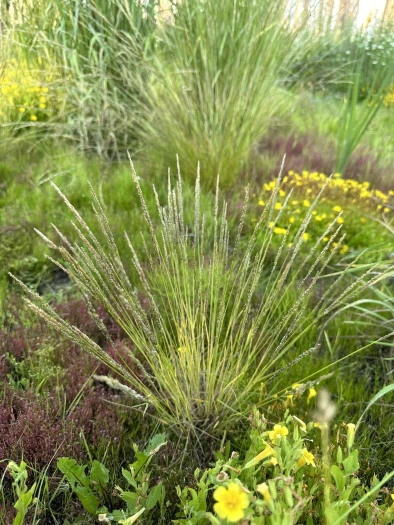Mountain Bentgrass
(Agrostis variabilis)
Mountain Bentgrass (Agrostis variabilis)
/
/

© Matt Berger
CC BY 4.0
Image By:
© Matt Berger
Recorded By:
Copyright:
CC BY 4.0
Copyright Notice:
Photo by: © Matt Berger | License Type: CC BY 4.0 | License URL: http://creativecommons.org/licenses/by/4.0/ | Uploader: sheriff_woody_pct | Publisher: iNaturalist |

























Estimated Native Range
Climate Requirements for Tempe, Arizona
| This Plant | Your Site | Plant Suitability for Your Location | ||
|---|---|---|---|---|
| • Precipitation | 7" - 114" | 8" | Your precipitation may be insufficient for this plant. Irrigate N" / year. | Irrigate N" / year |
| • High Temp. | 40°F - 97°F | 106°F | Your summers may be too hot for this plant. | Too hot |
| • Low Temp. | -22°F - 42°F | 41°F | Your winter temperatures are normal for this plant | Excellent |
This plant should grow well at your location with about N inches per year (Y minutes per month) of irrigation.
Summary
Agrostis variabilis, commonly known as Mountain Bentgrass, is a perennial grass native to montane and alpine regions across North America, particularly in the Rocky Mountains and the Pacific Northwest. It thrives in moist, well-drained soils found in subalpine meadows, wetlands, and open woodlands, often at elevations above 6,000 feet. Mountain Bentgrass typically grows up to 2 feet tall and is characterized by its fine-textured, bright green leaves and airy flowering panicles that appear in summer. The flowers are not particularly showy, but they add a delicate texture to the landscape.
Mountain Bentgrass is valued for its adaptability to moist environments and its ecological role in providing habitat and food for various wildlife species, including birds and small mammals. It is often used in restoration projects to stabilize soil and prevent erosion. In cultivation, it requires consistent moisture and can tolerate a range of light conditions from full sun to partial shade. While it is not commonly used in ornamental gardening, it can be an effective ground cover in naturalized areas or rain gardens. Gardeners should be aware that in optimal conditions, it can spread vigorously, potentially becoming invasive.CC BY-SA 4.0
Mountain Bentgrass is valued for its adaptability to moist environments and its ecological role in providing habitat and food for various wildlife species, including birds and small mammals. It is often used in restoration projects to stabilize soil and prevent erosion. In cultivation, it requires consistent moisture and can tolerate a range of light conditions from full sun to partial shade. While it is not commonly used in ornamental gardening, it can be an effective ground cover in naturalized areas or rain gardens. Gardeners should be aware that in optimal conditions, it can spread vigorously, potentially becoming invasive.CC BY-SA 4.0
Plant Description
- Plant Type: Grass
- Height: 1-1.5 feet
- Width: 1-2 feet
- Growth Rate: Moderate
- Flower Color: N/A
- Flowering Season: Summer
- Leaf Retention: Deciduous
Growth Requirements
- Sun: Full Sun, Part Shade
- Water: High
- Drainage: Medium, Slow
Common Uses
Bank Stabilization, Erosion Control, Low Maintenance, Water Garden
Natural Habitat
Montane and alpine regions, particularly in subalpine meadows, wetlands, and open woodlands
Other Names
Common Names: Variable Bentgrass, Mountain Redtop, Alpine Bent, Mountain Bent, Variable Bent
Scientific Names: Agrostis variabilis, Agrostis michauxii var. alpina, Agrostis michauxii var. alpina, Agrostis varians
GBIF Accepted Name: Agrostis variabilis